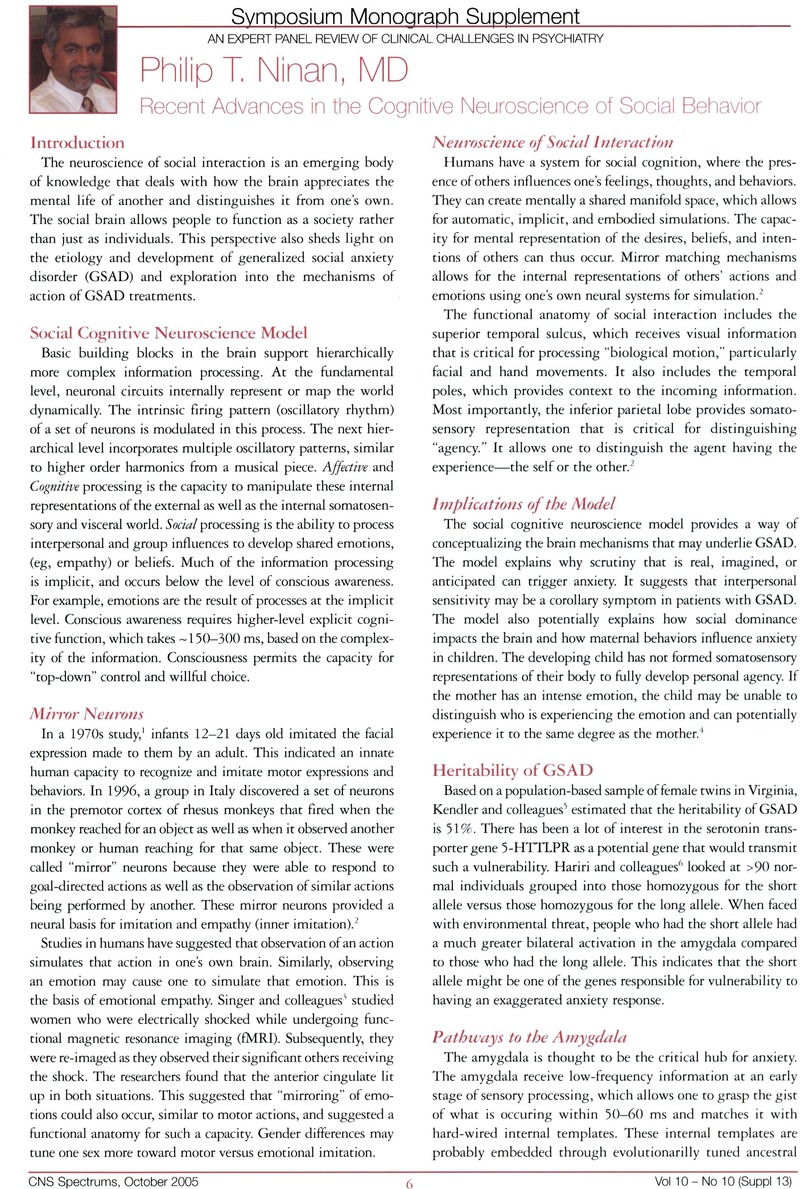No CrossRef data available.
Article contents
Recent Advances in the Cognitive Neuroscience of Social Behavior
Published online by Cambridge University Press: 07 November 2014
Abstract
An abstract is not available for this content so a preview has been provided. Please use the Get access link above for information on how to access this content.

- Type
- Symposium Monograph Supplement
- Information
- Copyright
- Copyright © Cambridge University Press 2005
References
1.Meltzoff, AN, Moore, MK. Imitation of facial and manual gestures by human neonates. Science. 1977;198(4312):74–78.CrossRefGoogle ScholarPubMed
2.Gallese, V. The manifold nature of interpersonal relations: the quest for a common mechanism. In: Frith, C, Wolpert, D, eds. The Neuroscience of Social Interaction: Decoding, Influencing, and Imitating the Actions of Others. New York, NY: Oxford University Press; 2003:159–182.Google Scholar
3.Singer, T, Seymour, B, O'Doherty, J, et al.Empathy for pain involves the affective but not sensory components of pain. Science. 2004;303:1157–1162.CrossRefGoogle Scholar
4.Kozorovitsky, Y, Gould, E. Dominance hierarchy influences adult neurogenesis in the dentate gyrus. J Neuroscience. 2004;24:6755–6759.CrossRefGoogle Scholar
5.Kendler, KS, Karkowski, LM, Prescott, CA. Fears and phobias: reliability and heritability. Psychol Med. 1999;29:539–553.CrossRefGoogle ScholarPubMed
6.Hariri, AR, Drabant, EM, Munoz, KE, et al.A susceptibility gene for affective disorders and the response of the human amygdala. Arch Gen Psychiatry. 2005;62:146–152.CrossRefGoogle ScholarPubMed
7.Kagan, J, Reznick, JS, Snidman, N. Biological basis of childood shyness. Science. 1988;240:167–171.CrossRefGoogle Scholar
8.Schwartz, CE, Wright, CL, Shin, LM, Kagan, J, Rauch, SL. Inhibited and uninhibited infants “grown up”: adult amygdalar response to novelty. Science. 2003;300:1952–1953.CrossRefGoogle ScholarPubMed
9.Stein, MB, Goldin, PR, Sareen, J, et al.Increased amygdala activation to angry and contemptuous faces in generalized social phobia. Arch Gen Psychiatry. 2002;59:1027–1034.CrossRefGoogle ScholarPubMed
10.Zhou, F-M, Liang, Y, Salas, R, Zhang, L, De Biasi, M, Dani, JA. Corelease of dopamine and serotonin from striatal dopamine terminals. Neuron. 2005;46:65–74.CrossRefGoogle ScholarPubMed
11.Barinaga, M. Developmental biology. Newborn neurons search for meaning. Science. 2003;299:32–34.CrossRefGoogle ScholarPubMed




